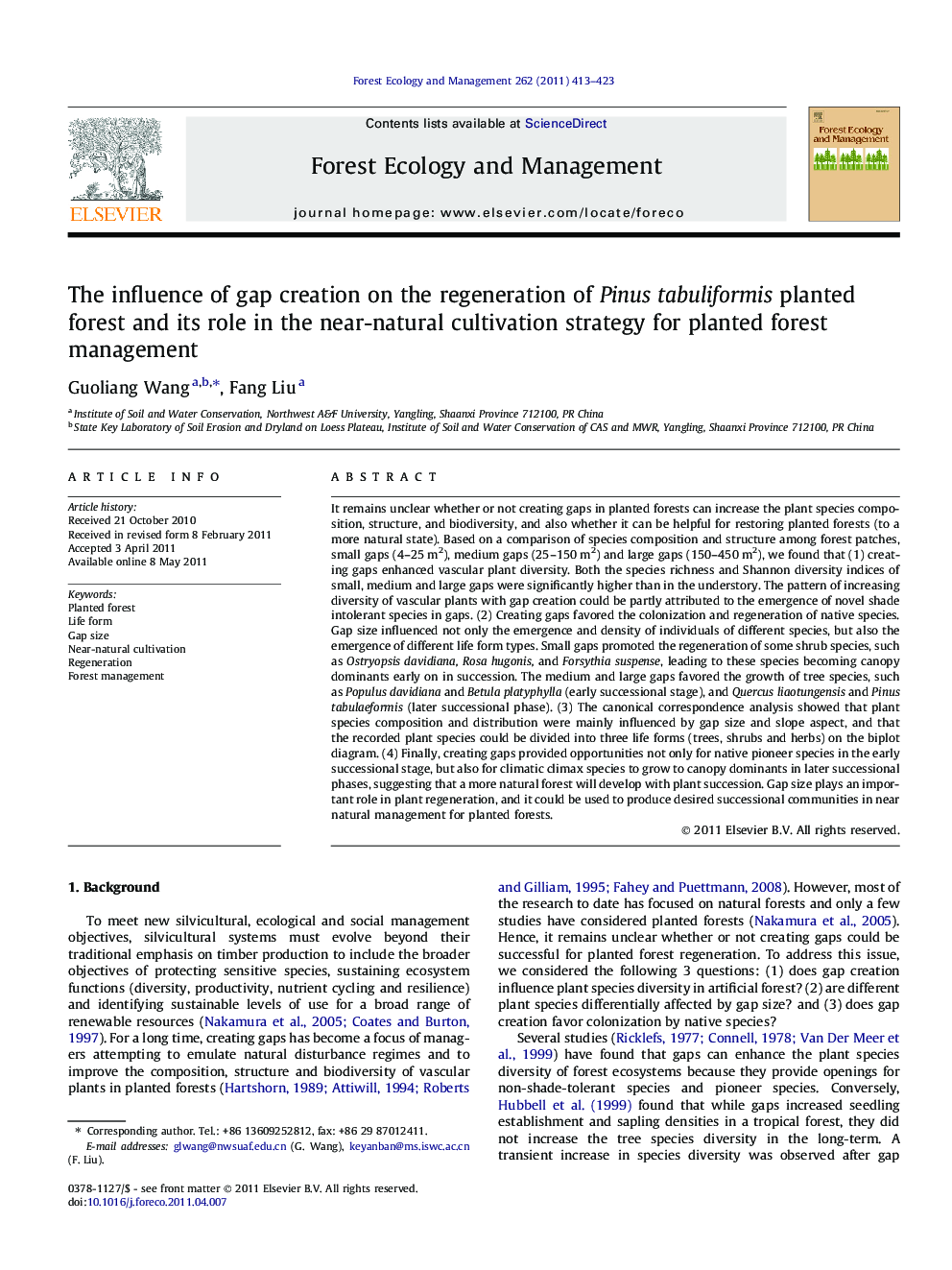| کد مقاله | کد نشریه | سال انتشار | مقاله انگلیسی | نسخه تمام متن |
|---|---|---|---|---|
| 87516 | 159254 | 2011 | 11 صفحه PDF | دانلود رایگان |

It remains unclear whether or not creating gaps in planted forests can increase the plant species composition, structure, and biodiversity, and also whether it can be helpful for restoring planted forests (to a more natural state). Based on a comparison of species composition and structure among forest patches, small gaps (4–25 m2), medium gaps (25–150 m2) and large gaps (150–450 m2), we found that (1) creating gaps enhanced vascular plant diversity. Both the species richness and Shannon diversity indices of small, medium and large gaps were significantly higher than in the understory. The pattern of increasing diversity of vascular plants with gap creation could be partly attributed to the emergence of novel shade intolerant species in gaps. (2) Creating gaps favored the colonization and regeneration of native species. Gap size influenced not only the emergence and density of individuals of different species, but also the emergence of different life form types. Small gaps promoted the regeneration of some shrub species, such as Ostryopsis davidiana, Rosa hugonis, and Forsythia suspense, leading to these species becoming canopy dominants early on in succession. The medium and large gaps favored the growth of tree species, such as Populus davidiana and Betula platyphylla (early successional stage), and Quercus liaotungensis and Pinus tabulaeformis (later successional phase). (3) The canonical correspondence analysis showed that plant species composition and distribution were mainly influenced by gap size and slope aspect, and that the recorded plant species could be divided into three life forms (trees, shrubs and herbs) on the biplot diagram. (4) Finally, creating gaps provided opportunities not only for native pioneer species in the early successional stage, but also for climatic climax species to grow to canopy dominants in later successional phases, suggesting that a more natural forest will develop with plant succession. Gap size plays an important role in plant regeneration, and it could be used to produce desired successional communities in near natural management for planted forests.
► Creating gap in planted forest may enhance the plant biodiversity.
► Gap size influenced the emergence and density of both individuals and functional group types.
► Plant composition and distribution mainly influenced by gap size and slope facing.
► Creating gaps provided opportunities not only for native pioneer species in the early successional stage, but also for climatic climax species to grow to canopy dominants in later successional phases.
► Gap creation could be used to produce desired communities in near natural management.
Journal: Forest Ecology and Management - Volume 262, Issue 3, 1 August 2011, Pages 413–423